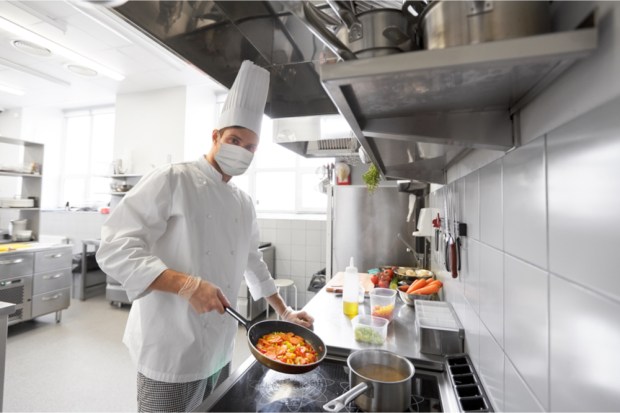How Many US Restaurants Will Survive The Pandemic?

The COVID-19 pandemic could have an unexpected casualty — a significant percentage of U.S. restaurants. After all, government shutdown orders have in many cases closed eateries for months, forced them to only offer takeout, reduced their dining-room occupancy levels or some combination of all three. Experts say that’s enough to force many restaurants to shutter for good.
“They’re going to stay closed, because they ran out of money and the landlords are evicting them and so forth. So it’s really a tough time,” celebrity chef Wolfgang Puck told CNBC on Friday (July 10). He believes some 25 percent of small U.S. restaurants will never reopen.
Puck’s signature U.S. eateries — such as the Los Angeles area’s Spago and Wolfgang Puck at Hotel Bel-Air — are gradually reopening as social-distancing regulations ease, albeit sometimes only to allow outdoor dining. The chef, who has 5,000 individuals working for him across the globe, also recently reopened his flagship restaurant in London.
“Our main aim really is to keep our employees safe and our customers safe,” Puck said. “That’s why we do testing every week. We want to make sure if somebody doesn’t feel good, we send them home right away. Safety is the most important part, because we don’t want to have the COVID spread.”
In Texas, the restaurant industry saw some 700,000 staffers put out of work at the shutdown’s peak as approximately 34 percent of restaurants closed. Joe Monastero, chief strategy and operations officer at the Texas Restaurant Association, told PYMNTS in a recent interview that those eateries that are open again are running at half capacity — or even less.
To encourage customers to return, the association recently unveiled a “Texas Restaurant Promise” program in which eateries will agree to abide by specific social-distancing guideline. Those that do can display a special decal in their doorway so consumers can spot participating restaurants.
Getting customers to feel safe is important given that PYMNTS consumer surveys have found that worried Americans are dining out less. Some 35.3 percent of consumers we polled reported dining less at quick-service restaurants (QSRs), while 35.9 percent are going to sit-down restaurants less than they had pre-pandemic.
Projections based on PYMNTS research estimate that 53.6 million of the 156.6 million Americans who are dining at eateries less frequently plan to make restaurant orders from their residences more often. But another 24.7 million are simply done with dining in restaurants altogether even after the pandemic passes.
That suggests restaurants have lots of work ahead to encourage diners if eateries hope to stay in business.
